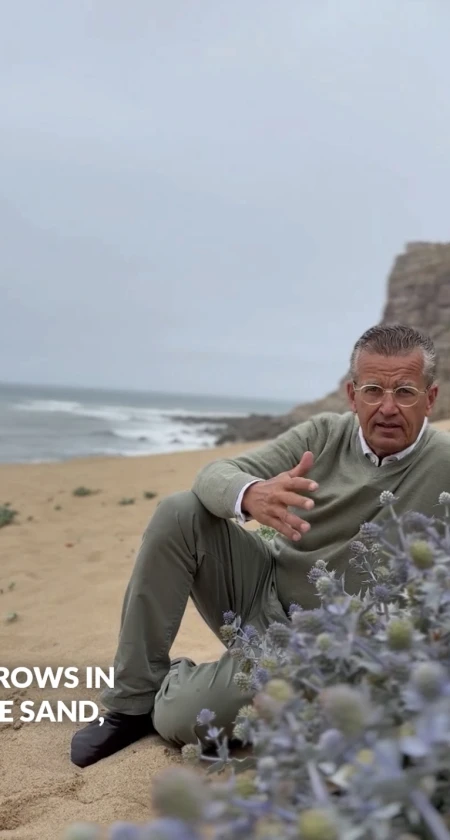
Early morning hours on the Portuguese Atlantic coast. Wind, salt, sand – and in the midst of it all: *Eryngium maritimum*, sea holly. It grows where hardly anything grows: in pure sand, without shade, with salt spray and relentless wind. And yet it lives – and shines.
Blue-grey foliage, bluish flowers, structured like a spiny creature. The growth low, compact, stoic. Native along European coasts, from Portugal to the Baltic, sea holly is a survivor and specialist. It tolerates rain well – provided it percolates through sandy, well-draining soils.
In a gravel garden, it would be a superstar. No watering, no protection – yet vital. Like spurge or artemisia: plants that make do with what's there. But true sea holly is not a garden plant. Not because it couldn't be – but because it's not allowed to be. Too rare, too threatened – it's under strict protection. But there is an alternative.
*Eryngium planum*, also called flat-leaved sea holly, originates from the steppes of Eastern Europe and brings the same blue, the same robustness, the same frugality – and thrives under gravel garden conditions: lean soil, little water, well-draining substrate.
Bees love it, the structure remains until winter – like all inhabitants of a gravel garden. While true sea holly arranges itself with salt and sand on the Atlantic, *Eryngium planum* arranges itself with our continental climate.
And for those who miss the sea: *Eryngium planum* carries its blue like a quiet quote from the coast into every garden.